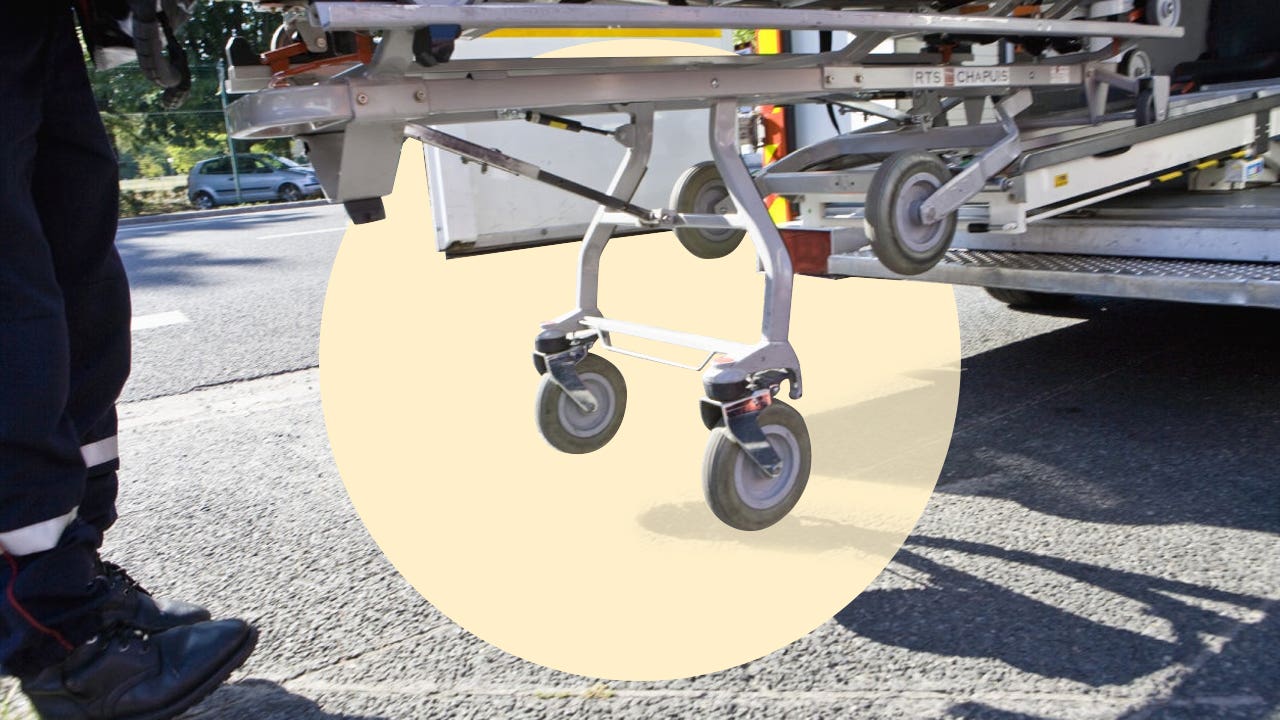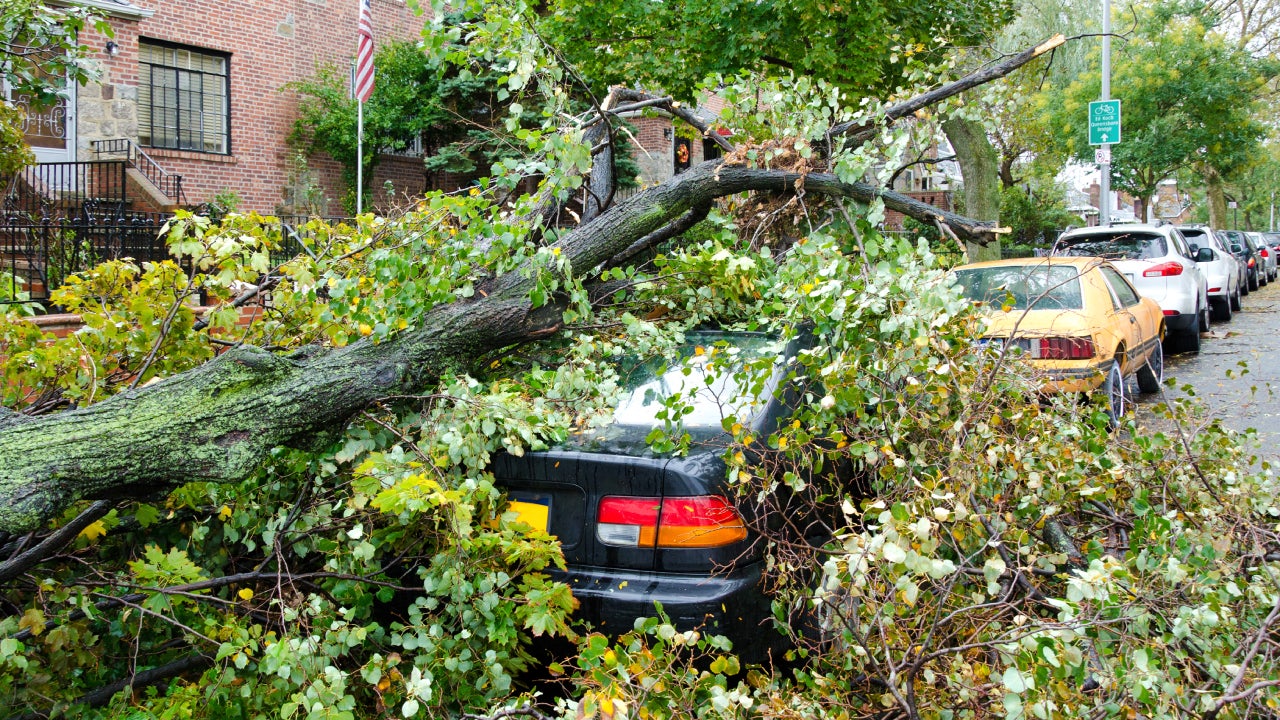Does car insurance cover ambulance rides?

Key takeaways
- Personal injury protection (PIP), medical payments and uninsured motorist coverage typically cover the cost of ambulance rides from car accidents.
- Personal injury protection and medical payments coverage from your auto policy can pay for an ambulance ride if you are struck by a car as a pedestrian.
- In situations where there is overlapping insurance coverage, PIP or medical payments are usually the main sources of coverage for medical expenses.
Ambulance rides can be an expensive part of emergency medical care, and the last thing you want to worry about is if you can afford to seek treatment. Your car insurance can cover an ambulance ride in several ways, but the key is to have the right coverage in place. Without proper coverage, you may need to rely on your health insurance — which may not pay for an ambulance ride related to a car accident — or pay for it out-of-pocket. Bankrate’s insurance editorial team will walk you through the various coverage options and scenarios in which your car insurance might cover an ambulance ride.
When does car insurance cover ambulance rides?
As long as you have medical payments (Medpay) coverage or personal injury protection (PIP) as part of your car insurance policy, your insurer will typically cover the cost of going to the hospital in an ambulance after you’re involved in a car accident, regardless of who was at fault for the incident. This applies even if you are struck by a vehicle as a pedestrian.
If you do not have this type of coverage and weren’t at fault, the at-fault driver’s bodily injury coverage should pick up the tab for the cost of the ambulance ride.
PIP and Medpay have coverage limits, and the available coverage options depend on your carrier and the state. When your PIP or medical payments coverage exceeds your policy’s limit, you may be on the hook for part or all of your ambulance bill, or it may be covered by your health insurance.
As a general rule, health insurance typically kicks in to cover medical expenses only after any applicable coverage from your car insurance policy is exhausted. However, this is not always the case, and factors like state law and the specifics of both your auto and health insurance policies will determine coverage.
What car insurance coverage covers ambulance rides?
While every insurance company has its own limits on how much of your medical bills it will pay, the best car insurance companies offer several financial protections that may cover ambulance rides. Every policy includes different categories of coverage, some of which will be mandatory in your state and some that may be optional. Here are the types that may pay your ambulance company for medical expenses:
- At-fault driver’s bodily injury liability: If another driver is at fault in the accident, their bodily injury liability coverage should pay for your ambulance ride. This is mandatory coverage in most states.
- Personal injury protection (PIP): Some states, called no-fault states, require you to carry PIP. If you live in one of these states, it is a mandatory part of your policy and could pay for your ambulance costs.
- Medical payments coverage: Medical payments coverage is optional coverage in many states (and required in a few), but this coverage can be a great way to pay for an ambulance ride if you have it on your policy. It may also cover your ambulance costs if you are in an accident when riding a bike, walking or are a passenger in someone else’s car.
- Uninsured and underinsured motorist coverage (UM/UIM): About one in seven drivers is estimated to be on the road illegally without insurance. You may need UM/UIM coverage to protect you in case you are involved in an accident with an uninsured or underinsured driver. This type of insurance kicks in when the other driver is at fault, but is uninsured or underinsured, and could help pay for some of your medical care, including the ambulance ride.
How much do ambulance rides cost?
Ambulance costs vary greatly depending on a number of considerations such as where you live, whether the ambulance company is for-profit or nonprofit and the type of care you receive. There may be a base charge along with a per-mile surcharge, so your distance from the closest hospital may also play a role.
The most recent study published in Health Affairs found that the median ambulance bill in the U.S. was $450. If an air ambulance is required, the median cost skyrockets to $21,698. In many urban areas, the costs are higher than they are in rural areas. If you live in Washington, D.C., for example, you may have to pay $1,000 for an ambulance ride, along with a mileage fee as of 2022.
According to a report from the Public Interest Network, as of 2022 the states with the highest average ambulance costs are:
- California: $1,209
- Massachusetts: $1,024
- Minnesota: $1,133
Alternatives to paying for ambulance rides with car insurance
If your auto insurance doesn’t cover the cost of medical attention you received during an ambulance ride, you may have other options. In many cases, a combination of car insurance and health insurance will pay for the costs you incur during an accident.
Health insurance
Your health insurance policy may cover ambulance costs in some cases, but it depends on how your health insurance interacts with your car insurance. In most states, your car insurance policy pays first, and your health insurance may cover overages. One thing to keep in mind is that your health insurance deductible may still apply.
In other states, your health insurance policy pays first. A good example is the state of New Jersey, where drivers can designate their health care provider as their primary source of health care if they are injured in a car accident.
In general, there are a number of factors that dictate which type of policy is responsible for picking up the tab for the costs of the ambulance used after a car accident.
Accident insurance
If you have accident insurance, usually purchased through your employer, it may be used in many cases to pay for ambulance rides. Not everyone has this type of policy. It is considered supplementary to your health insurance rather than a replacement for it. Accident insurance is designed to help pay for costs that are not picked up by health insurance.
Accident insurance won’t be the first place to look for reimbursement of ambulance costs, however. Accident insurance, like health insurance, may include a deductible or copay that you’ll need to pay out of pocket. This may also be true of your car insurance, but a quick call to your agent and a review of your health and accident paperwork can help you see which option will save you the most money.
Medicaid or Medicare insurance
Depending on your state, Medicaid or Medicare may cover all or some of your injuries related to a car accident, including an emergency ambulance ride. For example, Michigan PIP allows drivers the option to keep PIP as the primary medical care provider or to opt out of PIP coverage to rely on their Medicaid or Medicare coverage. For help with coverage selection, contact your insurance agent or Medicare.gov or Medicaid.gov for assistance.
Who pays for ambulance rides if there is a coverage overlap?
A few car insurance coverage types can pay for ambulance costs, so overlapping coverage is pretty common. It’s important to understand that PIP and Medpay are not subject to negligence laws like bodily injury and property damage coverage. Since PIP and Medpay tend to act as primary coverage for medical expenses resulting from a car accident, insurance companies usually only pull from other coverage types once the primary coverage limits are met.
Each state has different minimum auto insurance requirements. While keeping basic coverage usually results in cheaper car insurance, many drivers opt for better financial protection and choose higher limits — meaning each claim situation varies.
For example, let’s say an uninsured driver hits you, and you have $15,000 in medical expenses. Your policy has $5,000 in PIP and 50/100 in uninsured motorist coverage. Your carrier would pay out $5,000 in PIP and $10,000 in UM coverage. However, if you live in North Dakota, where drivers carry $30,000 in PIP, all $15,000 of your medical expenses would be covered by your PIP.
Another example is if you are at fault for an accident and have $15,000 in medical costs and a Medpay limit of $5,000. Your Medpay would cover the first $5,000, and your health insurance would likely cover the remaining $10,000. While Medpay usually doesn’t have a deductible, you will be responsible for your health insurance deductible and co-pays.
Frequently asked questions
Why we ask for feedback Your feedback helps us improve our content and services. It takes less than a minute to complete.
Your responses are anonymous and will only be used for improving our website.
You may also like

Will my homeowners insurance policy cover tree removal?

Does homeowners insurance cover volcanic eruptions?

Does car insurance cover hurricane damage?

Does car insurance cover flooding damage?


